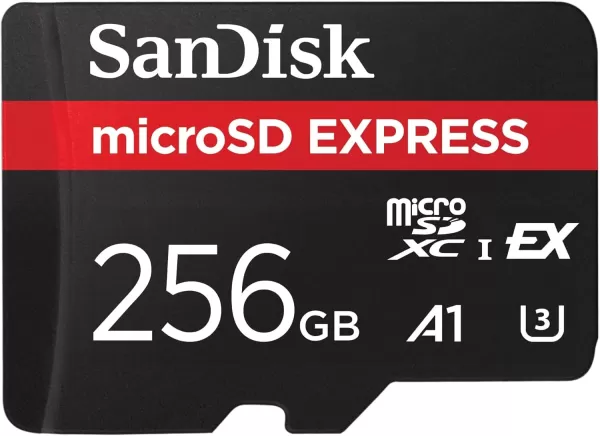Nintendo Switch 2 Embraces MicroSD Express for Faster Storage
Nintendo revealed last week that the Nintendo Switch 2 will exclusively support MicroSD Express cards for storage expansion. This shift may frustrate users with existing MicroSD card collections, but the decision is logical—MicroSD Express offers significantly faster performance.
These cards interface with the console in a way that delivers read/write speeds comparable to the Switch 2’s internal UFS (Universal Flash Storage). This is crucial, as it ensures games on expansion cards load nearly as quickly as those stored internally—at least in theory. The trade-off is losing compatibility with cheaper, non-Express MicroSD cards.
MicroSD vs. MicroSD Express
MicroSD cards have evolved through six speed classes over the years. Early SD cards offered just 12.5MB/s, sluggish by modern standards. Speeds improved with SD High Speed at 25MB/s, up to SD UHS III at 312MB/s. Five years ago, the SD Association introduced SD Express, dramatically boosting performance.
Unlike the older UHS-I interface, SD Express leverages PCIe 3.1, the same technology behind high-speed NVMe SSDs. This enables full-sized SD Express cards to reach transfer speeds up to 3,940MB/s—far surpassing traditional SD cards.
MicroSD Express cards, while not as fast as full-sized versions, still achieve up to 985MB/s, tripling the speed of the fastest non-Express MicroSD cards.
Why MicroSD Express for Switch 2?
Nintendo rarely explains its hardware choices, but the Switch 2’s MicroSD Express requirement has clear advantages, primarily speed. A game on a MicroSD Express card, using the PCIe 3.1 interface, loads significantly faster than on a UHS-I MicroSD card—a trend that may soon influence handheld gaming PCs.
With the Switch 2’s internal storage upgraded to UFS from eMMC, requiring expansion media with comparable speed is a logical step. While exact load times for games like Breath of the Wild remain unconfirmed, early demos suggest substantial improvements—Polygon reported 35% faster fast-travel times, and Digital Foundry noted a 3x boost in initial load times. These gains likely stem from faster storage, though the upgraded CPU and GPU also help process data more efficiently. Nintendo’s choice ensures external storage won’t bottleneck future games requiring high-speed disks.
This also sets the stage for future advancements. The SD 8.0 Specification allows full-sized SD Express cards to hit 3,942MB/s. While MicroSD Express cards aren’t there yet, they could reach similar speeds in time, assuming the Switch 2 supports it.
MicroSD Express Storage Options
MicroSD Express cards have been slow to gain traction, but the Switch 2’s launch will likely change that. Currently, options are limited. Lexar offers a single MicroSD Express card in 256GB, 512GB, and 1TB variants, with the 1TB model priced at $199.

Lexar Play Pro MicroSD Express
0See it at AmazonSanDisk currently offers just one 256GB MicroSD Express card, matching the Switch 2’s internal storage capacity. By the console’s launch, don’t expect many cards exceeding 512GB. However, as demand grows, companies like Samsung will likely expand their offerings.

SanDisk MicroSD Express 256GB
0See it at Amazon-
Enhanced experience with the same classic charmClaim your exclusive Bouncy Poring Pack pre-registration giftJoin 20 million players worldwideGravity Game Hub reveals Ragnarok X: Next Generation, its cross-platform MMORPG with a global player base ofAuthor : Oliver Nov 24,2025
-
The John Wick anime prequel has officially revealed its storyline setting.During CinemaCon, Keanu Reeves confirmed his return to voice the iconic character in the animated project, alongside his recently announced reprise of the role in John Wick 5.TAuthor : Max Nov 22,2025
- STALKER 2: Heart of Chornobyl - All Endings (& How to Get Them)
- Steampunk RPG Eldgear Unveiled by KEMCO
- NYT Hints and Answers: Guide to January 10, 2025
- Metaphor: ReFantazio - Complete Bond Guide
- Discover the Artifacts in Stalker 2: Locations and Acquisition
- Hitman Devs' "Project Fantasy" Hopes to Redefine Online RPGs























